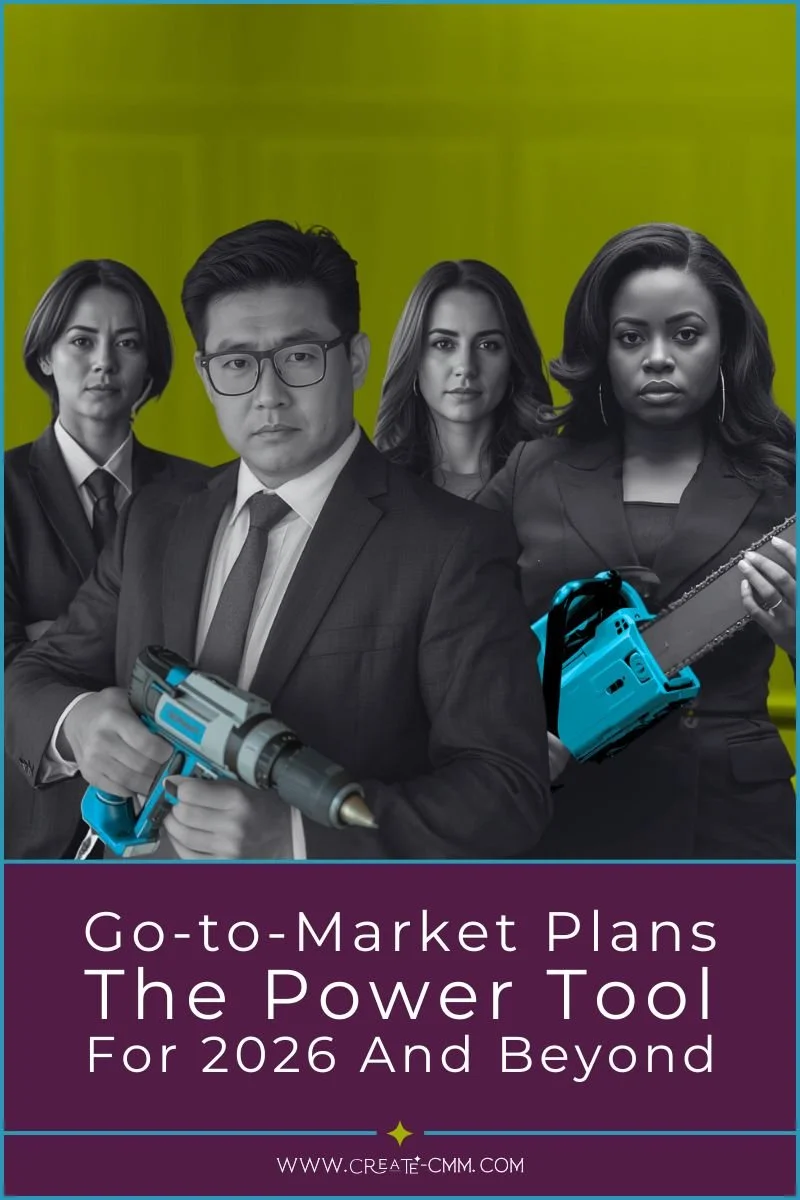Content That Converts: Get More Work by Being Visible, Credible and Findable
A version of this article was originally published in The Legal Intelligencer here on July 2nd, 2025.
It’s every hard-networking lawyer’s dream scenario—work just falls into your lap.
Imagine this scenario: You're at a legal or industry conference. At the registration table a fellow attendee turns to you and says, “I’ve been reading your articles on LinkedIn—really interesting!” Maybe you know the person, or maybe you don’t. But you’re pretty sure they’ve never liked or commented on your posts before. Maybe this happens again at the networking lunch or at the cocktail hour. Someone comments positively on your recent article or post.
A week later, a client inquiry comes in from a referral. You’ve never met the referral source—or even more likely, the client doesn’t tell you who referred them to you.
No pitching, no pursuing. The client and the work came to you.
Believe it or not, this is not a dream.
It happened to a client of ours.
And, even better, it actually happens quite often.
BTI Consulting recently estimated that “71% of new law firm relationships begin the same way: With an unprompted peer-to-peer recommendation — casual, unsolicited, and usually invisible. Even the most enduring partnerships often start with a single offhand suggestion from one in-house counsel to another.”
I call these “silent referrals.” Unpredictable and elusive, silent referrals may come as often from people who know “of you” as from people who know you personally or have worked with you. You don’t know when they happen. Referral sources typically don’t tell you they’ve referred someone, and new clients may not give you complete information when they hire you.
These referrals are fragile, however. Many don’t convert into work because prospective clients drop off somewhere during their vetting and hiring process. You never even knew they were considering you.
If you can’t really track or replicate these silent referrals, why should you even care about them?
Because you can’t afford to ignore the power of silent referrals. Seven out of 10 new client relationships in the corporate space start from a silent referral. Person-to-person referrals as a driver of new business for lawyers who represent individuals is likely even higher—and harder to track.
And while you can’t directly generate these behind-the-scenes referrals yourself, you can cultivate them—and give yourself the best chance to win the work—through a combination of visibility, credibility and findability.
In its recent research, BTI Consulting identified “The 27 Invisible Places Where Clients Recommend Your Law Firm,” including online platforms such as LinkedIn, professional networking communities and thought leadership opportunities.
For our client, it was a combination of a few of those factors.
A white collar criminal defense attorney known in his professional communities as a skilled legal strategist with a track record of success, especially in the Middle District of Pennsylvania, his work often involved defending high-profile people or those in public service in sensitive matters. He knew referrals likely wouldn’t come from past clients (who valued their privacy). He had recently concluded a leadership role in a professional association that afforded him visibility and the opportunity to publish thought leadership, and he wanted to replace those opportunities. We built a LinkedIn-based marketing and business development program focused on content and network outreach specifically to reinforce his reputation, highlight his expertise and increase his visibility to a wider circle of potential referral sources.
After six months, the data showed strong LinkedIn metrics, growth in his connections and subscribers to the newsletter we had launched, and good engagement and reach. But what mattered most to our client were his real-life experiences. Several attendees at the annual meeting of his professional association—people who had never commented directly on his LinkedIn posts—complimented his articles and posts. Even better, he’d received client referrals from lawyers he didn’t know personally and who had no first-hand experience with his work.
His presence on LinkedIn made him visible, credible and findable. The newsletter content he regularly published—a mix of articles on criminal, white collar and constitutional law, trial strategy and his approach to client representation—reinforced his reputation. And his posts and updates showed he was still actively practicing.
Or, as our client put it, “alive and well, and still practicing law, not pushing up roses in the local cemetery.” (There is a reason his writing is so well received!)
Being visible, credible and findable to potential clients and referral sources can help improve your chances of converting silent referrals into client
Understand Your Referral Types
Our client’s recent client referrals were likely reputation-based, but most lawyers don’t receive just one type of referral. Recognizing and supporting each type of referral source can increase both the volume and quality of your referrals.
Experience-based referrals come from people who have first-hand knowledge of your work—clients, co-counsel, opposing counsel or others within your professional circle. These referrals carry significant weight with potential clients because they come from people who can provide detailed insight into your approach, expertise, skill and results. Referrals from current or former clients are particularly persuasive, but may not always be possible, based on your practice area.
Reputation-based referrals originate from peers who know you, your practice and your reputation, but haven’t worked with you directly—often other lawyers, both from within and outside your firm, as well as members of professional associations to which you belong. Reputation-based referral sources typically know at least some specifics about your skills and approach, the matters you handle and your overall track record of success.
Specialization-based referrals are the flip-side of reputation-based referrals. They come from people who perceive you as the “go to” lawyer in your specific practice area—whether it’s family law, M&A, employment disputes or data privacy. They may, or may not, know of your specific approach, skills or track record, but they feel as if they can refer with some confidence based on their overall perception of you as credible and authoritative in your practice area.
Content-based referrals are increasingly more common. These come from people who have consumed your content—articles, alerts and blog posts, LinkedIn updates—and feel confident to refer you to others. These referral sources may not have interacted with you, but your content has done the heavy lifting of both establishing your credibility and keeping you top of mind.
Be Visible Where Referrers (and Clients) Are Looking
Visibility means being consistently present where your referral sources spend time. For lawyers in most practice areas, one essential place is LinkedIn. According to the ABA’s most recent Legal Technology Survey Report, more than 90% of lawyers, regardless of the size of their firm, use LinkedIn. Your referral sources will use the platform to confirm that you, like our client, are still actively practicing and are indeed a strong match for their referral. For potential clients, LinkedIn is one of the first places they will look after hearing your name (along with you firm website and bio). Not being findable on the platform—or having an outdated or incomplete profile—can erode their trust and confidence.
Content Supports—and Supercharges—Referrals
Having an updated profile on LinkedIn is essential. Engaging with other users’ posts—liking, commenting or sharing—enhances your visibility.
Posting content supercharges your referrals and client conversions.
According to LinkedIn’s own data, 90% of users are passive content consumers—they read but don’t engage. Only 2% of users post content, and even fewer post consistently. Becoming one of those few raises your profile exponentially. Posting original content also establishes and reinforces your credibility as a trusted authority in your practice area.
Different types of content support different referral types, so a mix of content is ideal. Educational articles or practical insights reassure reputation-based referrers. Case summaries or client experience pieces help specialization-based referrers match you with the right matters. Even short posts sharing your observations or legal trends help reinforce that you are engaged, informed and active in your practice area.
Convert the Quiet Fans
You may have silent supporters you don’t know about. Part of that 90% of quiet consumers on LinkedIn, they don’t comment or react to your posts. But they are noticing and consuming your content. These quiet fans may turn out to be more than passive consumers; they can be a powerful driver of referrals. They might forward your content to others, mention you in meetings or recommend you to colleagues—all without your knowledge. But to do so, they need you to provide a steady flow of content to back up their referrals—content that gives them language, proof points and confidence to talk about you effectively to others. The more consistent, substantive and varied your content, the more trust and familiarity you build with a wider variety of quiet fans, even if they never reveal themselves.
Prevent Prospect Drop-Off
Prospect drop-off happens silently—and frequently. The vast majority of clients, whether organizations or individuals, conduct at least some internet vetting before they hire a lawyer. If they can’t find you, or if what they find doesn’t align with the referral they’ve been given, they will move on. And you will likely never know.
A robust online presence is essential for converting prospects into clients. At a minimum, you need to be findable online. Your online profiles (LinkedIn and website bio) should be up to date and clearly convey the clients you work with and the matters you handle. Beyond that, even a modest library of substantive content—blogs, articles, client alerts and posts on LinkedIn—can give potential clients the proof points they need to feel confident that you can handle their legal matters.
Work that truly just falls into your lap is a dream; silent referrals are a real-life phenomenon. Using content to be visible, credible and findable can nurture those referrals and help convert them into client work.
Featured Articles





